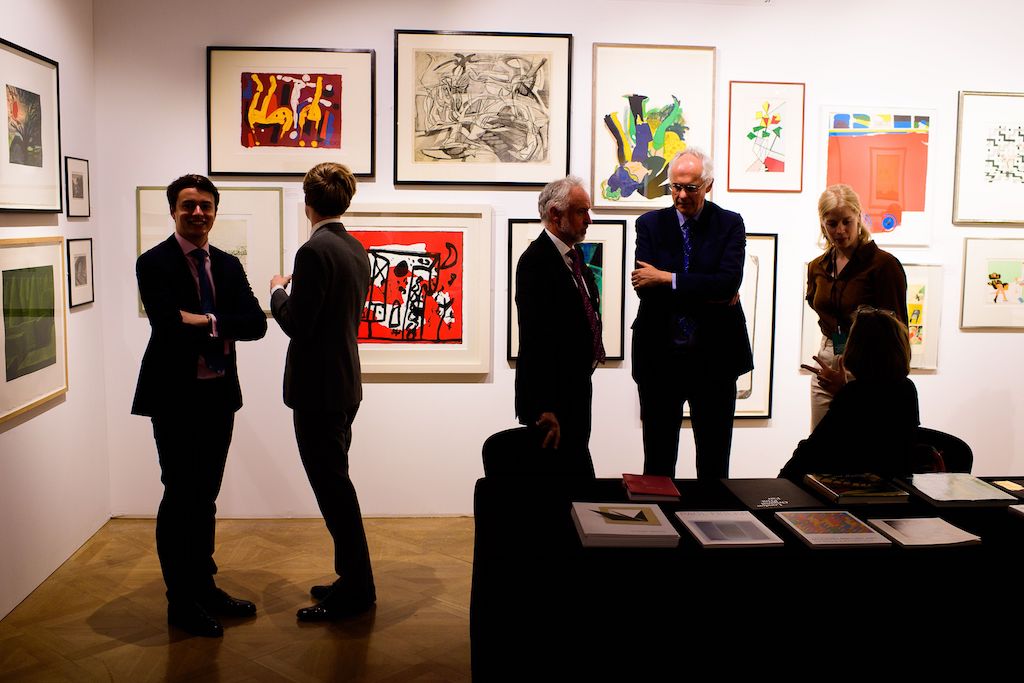[ad_1]

The 34th London Original Print Fair at the Royal Academy of Arts in 2019.
NICK HARVEY/SHUTTERSTOCK
A decision in a 15-year trade dispute between the United States and the European Union about the manufacturing of airplanes could result in a price hike for American buyers of certain types of photographs and prints.
Earlier this month, the World Trade Organization’s ruling gave the United States the authority to impose tariffs on a wide variety of European products, from Italian cheese to some printed materials from Germany and the United Kingdom, which include certain types of art.
Starting October 18, the U.S. will impose a 25 percent import duty on all of the following coming in from the U.K. and Germany: printed books, brochures, leaflets, printed matter in single sheets, lithographs on paper or paperboard created in the last 20 years, and pictures, designs, and photographs printed in the last 20 years. Such import costs could potentially be passed along to buyers.
The tariffs result from a $7.5 billion arbitration decision reached by the WTO, the largest in its history, about subsidies that the E.U. provides to the airplane manufacturer Airbus in violation of existing trade agreements.
In a statement to ARTnews, the Art Dealers Association of America said that the new tariffs will have a “detrimental impact” on American dealers, who often operate internationally.
“Because the tariffs apply to lithographs and photographs printed in the last twenty years, they will also have a considerable impact on living artists, who rely on galleries as an important vehicle to sell their works and to foster cultural exchange,” the ADAA said. “Additionally problematic is the short time between the WTO’s decision and the tariffs’ enforcement, leaving small businesses little time to prepare and adapt.”
Fritz Dietl, the president of the New York–based fine art shipping company Dietl International, told ARTnews that the new tariff will have “at least as much impact” as recent increases in import tariffs on artworks from China, which were instituted as part of President Trump’s trade war with the country.
“I think a lot of people don’t yet grasp the real impact of this new tariff,” Dietl said. “It caught people completely off-guard … and there’s no way around it.”
Dietl said the tariffs will have significant implications for both U.S. and European art enterprises, and mean a “huge financial gamble” for galleries who will have to pay 25 percent of a work’s value upfront.
“A lot of our clients—and we work all the majors dealers in the U.S.—are very worried, and we are sending alerts out to everybody,” Dietl said. “And a lot of our international clients are very worried as well. The Miami art fair season is upon us, and a lot of these dealers don’t know what to do or bring to the fair at this point.”
The U.S. first filed a complaint against the E.U. way back in 2004, saying that its subsidies for Airbus violated trade agreements agreed to by the two parties. The E.U., for its part, has argued that the U.S. has itself been violating such agreements in its own subsidies to the American plane manufacturer Boeing. A decision pertaining to those Boeing subsidies remains pending and could result in the E.U. imposing tariffs of its own.
Peter Tompa, a lawyer at the Washington, D.C. firm Bailey & Ehrenberg and the executive director of the nonprofit Global Heritage Alliance, said that, though the tariff will affect only a small segment of the art market, it could have real consequences there.
“Generally speaking, it’s a significant tariff on [a narrow] segment of the art trade and will most likely cause disruption, especially because it’s unanticipated, unlike the China tariffs,” Tompa said. “It will have the effect of limiting imports to the U.S. and encourage people, in the long haul, to seek similar materials from other countries.”
Tompa said it remains to be seen how long the tariffs will remain in place, since a ruling favorable to the E.U. in the WTO case regarding Boeing could see the E.U. quickly impose tariffs, bringing the two parties to the table.
“I suspect that the U.S. and the E.U. are going to try to resolve this fairy quickly,” Tompa said.
[ad_2]
Source link

